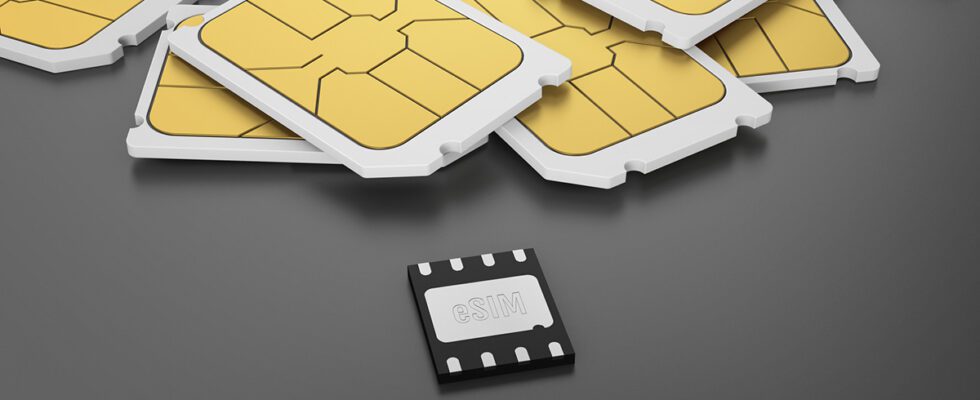Adopting the “slim” size, the physical SIM cards have steadily shrunk over time, passing to mini, micro and then nano format, until becoming virtual. The eSIM (embedded SIM) is soldered directly into a printed circuit board of the smartphone. Not only does this on-board SIM card take up limited space, but it is possible to administer it remotely without physical manipulation.
Thales and Qualcomm propose to go a step further in virtualization by presenting, at the last Mobile World Congress, the iSIM (integrated SIM). “A world first. No more need for a dedicated circuit, it integrates directly into the processor of the device, the SoC (for “System on Chip”).
Unveiled over a year ago, this embedded SIM card is certified by the GSMA, the global association for the mobile communications industry, and is based on Qualcomm’s Snapdragon 8 Gen 2 mobile platform. The iSIM will reinforce the development of the eSIM, of which it presents itself as the worthy successor.
According to research firm ABI Research, 293 million eSIM compatible smartphones were sold in 2022, a figure expected to reach 515 million units by 2027. This market is boosted by the launch of the iPhone range of smartphones 14 which integrate eSIM technology but, for the time being, only on the American market.
A questioning of the operator model
The rise of these virtual SIM cards is upsetting the established order in the world of telecoms, since they can be connected to any mobile network operator. The operator thus loses the “physical” link, embodied by the SIM card, which connected it to its subscriber and allowed it to push dedicated offers.
The customer no longer has to go to a store or call their operator to activate or modify their device’s SIM information. In the context of roaming, he can more easily choose the local operator with the best price, beyond the partner operator offered to him. He can also subscribe to several operators without having to change SIM card to switch from one network to another.
Like eSIM, iSIM features increased security by providing a vault to store subscription credentials. Physical SIM cards can be removed, lost or stolen, providing the ability to access the subscriber’s cellular network. This vulnerability leads to potentially sensitive data breaches.
Smaller footprint and less battery drain
According to Thales, iSIM offers two additional advantages to eSIM. On the one hand, it saves space (less than 1 mm2 versus 2.6mm2) eliminating the need for a dedicated component inside the connected terminal. On the other hand, iSIM consumes much less power than eSIM.
These two assets open the way to the Internet of Things. With iSIM, manufacturers will be able to create smaller and more compact connected objects. Less energy-consuming, the integrated card also extends the life of their battery. These advantages could appeal to the industrial world, which is making increasing use of machine-to-machine (M2M) sensors.
Regarding the consumer market, Thales expects iSIM to first be available in smartphones, smartwatches and other high-end wearables before becoming more widespread in the entry and mid-range segments. . By 2025, 488 million iSIM-compliant consumer and IoT devices could be in circulation worldwide.

